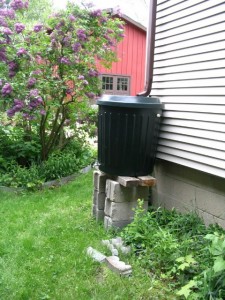With all of the very hot, dry weather we’ve had this summer, our garden has looked a bit wilted and droopy on occasion. We’ve watered more frequently because of that. Generally speaking, we try to conserve water and water only when it’s really needed. We live in the land of plenty of water, but that’s no reason to misuse our resources. With a little planning and forethought, vegetable gardeners can be wise in watering their gardens.
In general, a vegetable garden requires about an inch of rain a week to do well. When we take the time to pay attention to the rains, we notice that much of the time, we get about that. If not, it’s time to water.
The best times of the day to water are in the morning or in the late afternoon. Most sources agree that watering too late in the day is not a good idea because that will lead to dampness which can encourage fungus and mold.
It’s also important to give the garden a good soaking when watering. Regular shallow watering will encourage roots to grow shallowly rather than develop deeper, stronger roots.
Remember that the most important thing to get wet when watering is the soil near the roots. Although the leaves may be drooping, plants take up water from their roots. Wet leaves do little to feed a thirsty plant.
Gardening in containers is a good option for many gardeners with limited space. Careful attention must be paid to keeping container gardens adequately watered. They will dry out much more quickly than gardens planted in the soil.
A rain gauge is a handy device for keeping track of how much water your garden is getting. A coffee can or small bucket can also be used to monitor the rainfalls.
We’ve found that mulching our beds helps to retain moisture in the soil as well as offering a few other benefits such as weed suppression and adding more organic content to the soil.
Our rain barrels are greatly appreciated during the dry times. We use them to fill watering cans to water containers and other spots in the garden. If you don’t have a rain barrel, you might consider adding one or two to your dwelling. The Huron River Watershed Council website has a list of sources for purchasing a rain barrel as well as plans for making one yourself. A rain barrel saves money on water costs. In Ann Arbor, rain barrels also earn residential storm water credits on your water bill.
When we need to water the whole garden, we usually use a hose, which provides accuracy for getting the soil and not just the leaves wet. An added bonus to a watering session is the chance enjoy the scent of damp soil while surveying the garden and observing the green growth of our plot of land.



